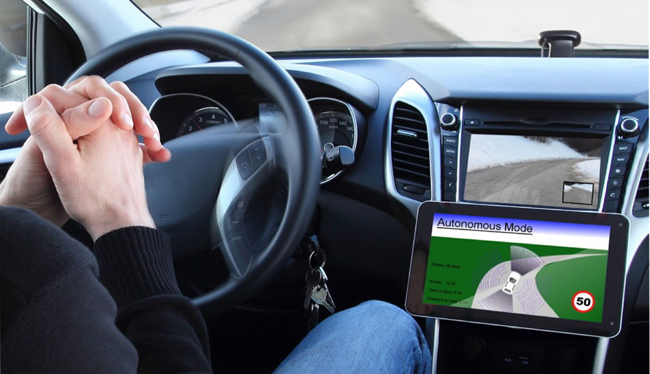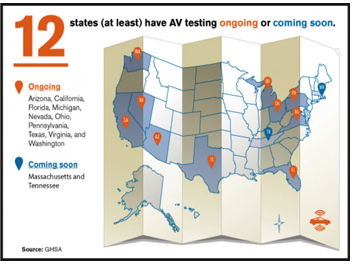

Idaho joins autonomous vehicle discussion
It’s 2017 and the promise of flying cars and tube-based commutes remains in the realm of science fiction – but future tech is still changing the landscape of transportation with developments in self-driving cars.
Google and Tesla are standouts in this arena (in the DOT world we call these cars autonomous/automated vehicles). But just about every major car manufacturer is developing their own version of a car that needs no driver.
Given the pressure from private businesses, ITD is joining Idaho lawmakers to see what the Gem State ought to do to prepare for this new generation of autonomous vehicle (AV). DMV business analyst Amy Smith recently joined a panel of experts to discuss this exciting future.
“As manufacturers and technology developers move forward at a rapid pace, states are struggling to keep up without clear guidelines of how automated vehicles should be integrated into our current traffic laws, infrastructure, and licensing,” she said.
Smith outlined preliminary AV guidelines national agencies have passed down. However, current practice has a hodgepodge of states creating a patchwork of laws and regulations.
Twelve states – including two bordering states, Washington and Nevada – are actively testing autonomous vehicles. Smith says southern states attract such testing because of their regular weather patterns and relative open spaces. Though no companies have reached out to ITD for counsel on bringing AV testing here, southern Idaho does offer ideal conditions for that activity - outside of record-breaking winter storms.
So will we soon see cars on Idaho’s highways driving themselves? That depends on your definition.
There are 6 levels of AV. At level 0, there are no automated functions. Plenty of cars today are at level 1, which includes tools like cruise control. Tesla’s latest models are bumped to level 3 by giving drivers the option to let go of the wheel on the highway while the car monitors traffic and lane position.
Level 5 is where we categorize the car of the future – fully autonomous in all conditions. It’s the end result of Google’s Waymo, Uber’s Otto, and Chrysler’s Portal. The concept is incredible – cars that can make perfect decisions, decrease congestion and nearly eliminate roadway fatalities. But it will be years before they make any impact on American roads.
“There are a number of outstanding issues states and federal regulators need to work out,” said Smith. “Registration, licensing, infrastructure, communication, cyber security, and insurance are just a few. Autonomous vehicles are a new world for transportation and it will take careful deliberation before fully self-driving cars can hit the road.”
Last September, the federal government released recommendations and best practices for states to adopt. However, the new Trump administration is sending signals those may change.
Last Sunday, the new director of the U.S. Department of Transportation Elaine Chao said she is reviewing those guidelines. Car companies have pressured the administration to relax them to speed-up implementation.
Chao said the safety benefits of AV is attractive, but expressed concerns the technology may eliminate jobs in the commercial delivery sector. She said her department will work to find a balanced solution.
Published 03-03-17